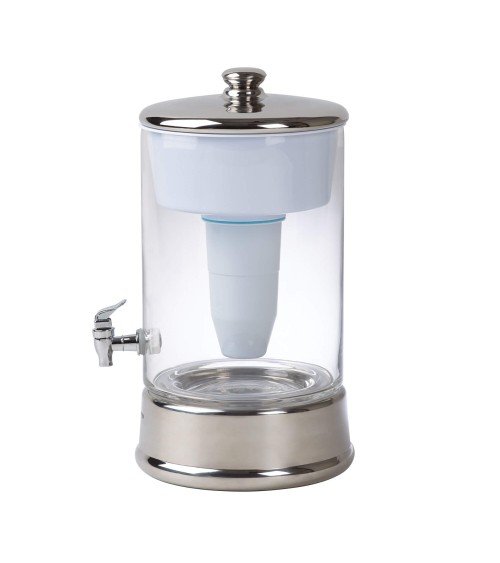ZEROWATER 40 CUP / 9.5L GLASS DISPENSER
Enjoy great-tasting water with next generation filter technology.
The ZeroWater filtration system combines FIVE sophisticated technologies that work together to remove virtually all dissolved solids from your tap water, delivering you great tasting water. ZeroWater filters are also the only pour-through filters on the market certified by the NSF to reduce lead.
ZeroWater filter technology also reduces 99% of all Fluoride from your water.
This 40-cup system comes with the largest capacity filter glass dispenser on the market today, our patented Ion Exchange filter, a laboratory-grade water quality testing meter, and a guarantee to remove virtually all dissolved solids from your tap water.
ZeroWater's first layer of filtration, activated carbon and oxidation reduction alloy removes the chlorine taste you are accustom to with tap water. The Ion Exchange stage removes virtually all dissolved solids that may be left over from public water systems or even leached into your water from piping such as Aluminum, Lead, Zinc, Nitrates and more. Three additional stages are included to remove other contaminants and to ensure your water receives the appropriate amount of treatment time to deliver a ""000"" reading on your laboratory-grade water quality meter included. ZeroWater: Advanced water filtration.
NOTE: In the factory, the filters are rinsed with purified water before being packaged in order to wash away the free carbon particles that are produced during the manufacturing process, as one of the filter layers is a carbon filter. It is normal to find some water when you open a new filter bag.
Dimensions (L x W x H): 38 x 14 x 27 cm

ZeroWater’s Premium 5-Stage Filtration
Removes 99.6% of Dissolved Solids,
including Lead.
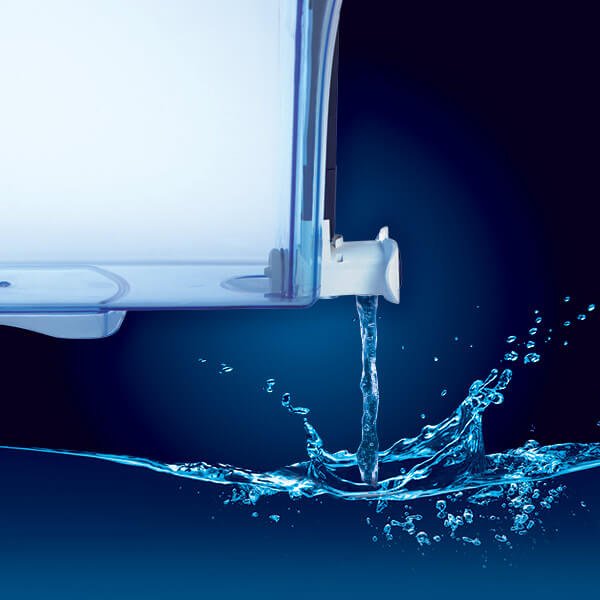
Ready-Pour® Technology
allows you to dispense filtered water
as the reservoir continues to filter.
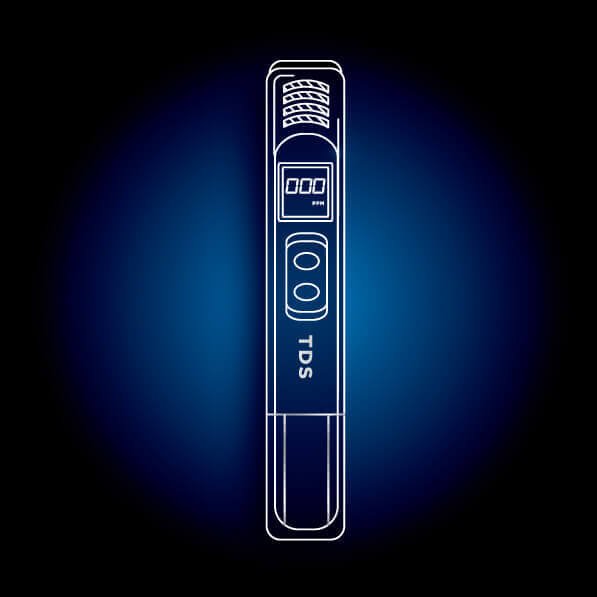
that measures total dissolved solids to
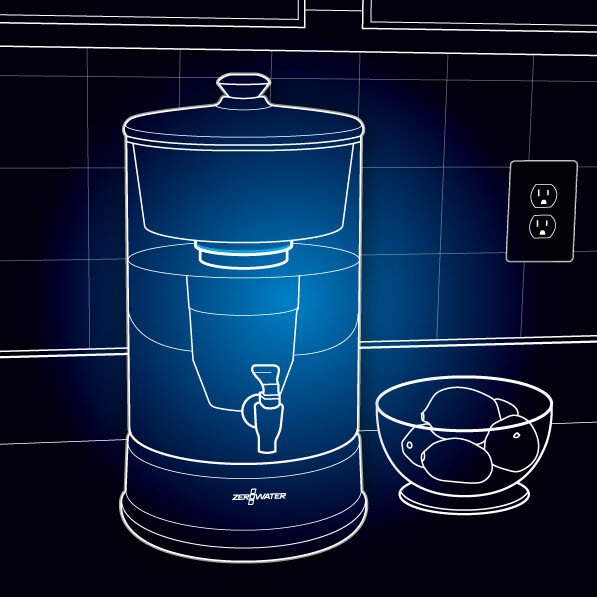
Elegant Counter Top Design
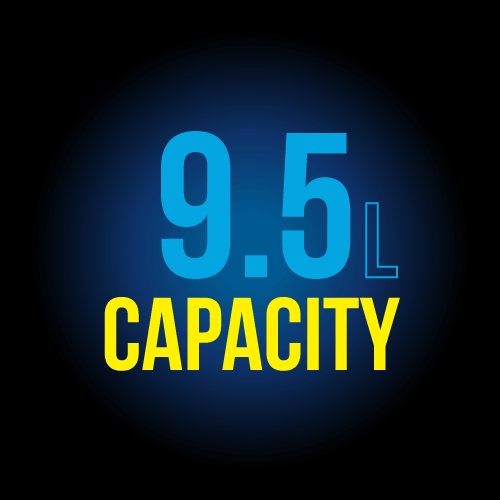
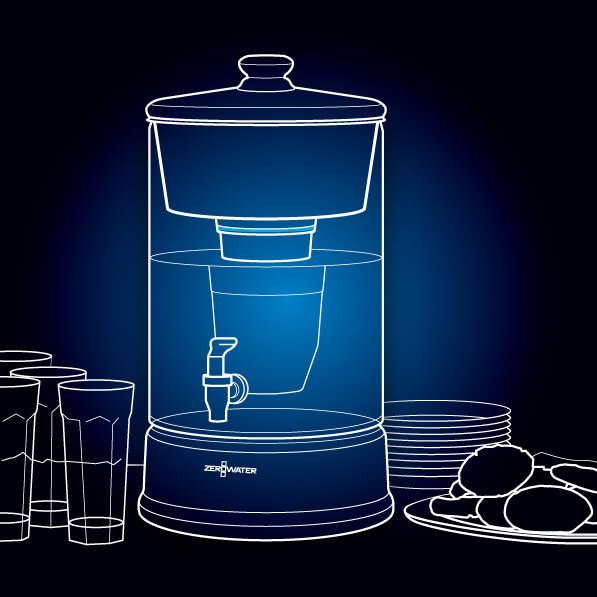
Large Capacity/Compact Design
If 9.5 litres is bit too much for you, take a look at the slightly variant of 5.4 litres. *Increased levels of TDS (total dissolved solids) may affect taste and appearance of your water. ZeroWater Technology is the only water filtration system to remove 99.6% of TDS, equivalent to TDS in purified bottled water.
WHAT IS TDS?
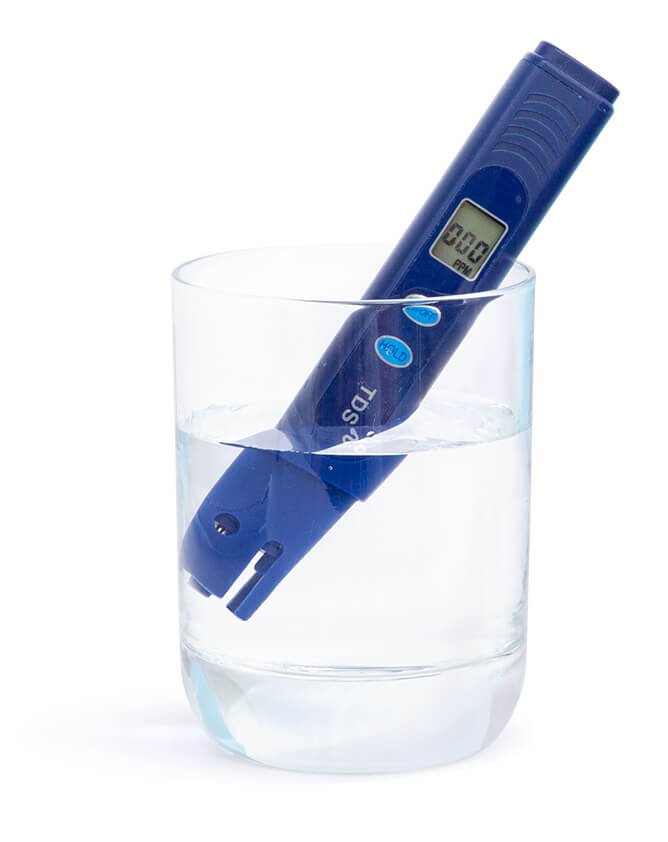
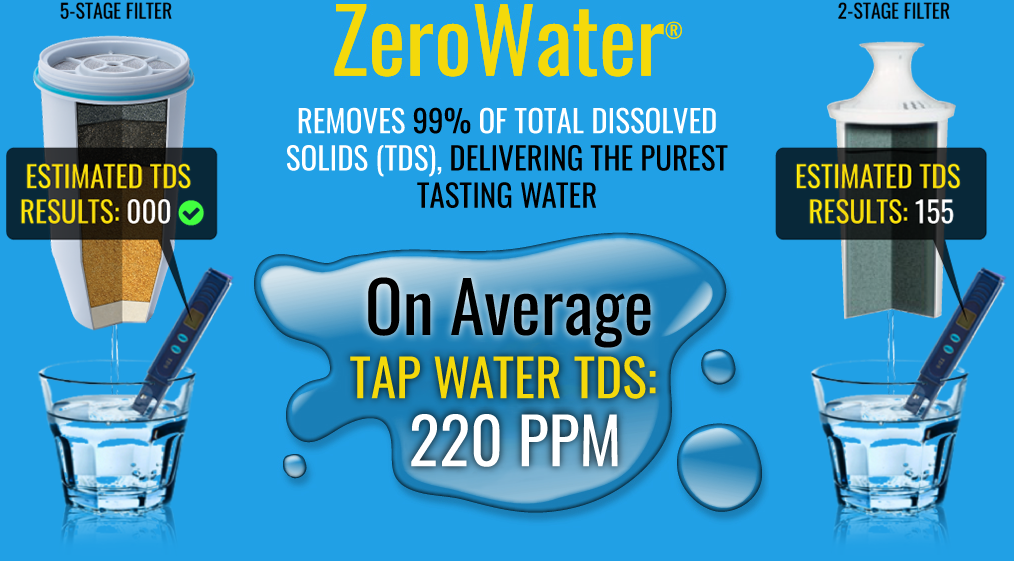
Below are the performance results of ZeroWater’s 5-stage filter vs. a conventional filter for inorganic chemicals as listed under the EPA’s national primary drinking water regulations and contaminants listed under the EPA’s secondary drinking water standards. Results shown are based on a 150 litre filtration, double the rated usage to ensure consumer safety. The compounds tested are compounds listed by EPA as Primary and Secondary drinking water contaminants. The compounds tested are also listed by the NSF/ANSI Standard 53 and Standard 42 with established procedures for filter manufactures reduction claims. The procedure used in this comparison study were based on the NSF/ANSI standards 42 and 53, 2018 editions. The methods of analysis used in this study are EPA approved methods for drinking water.
Test results as performed by 3rd party laboratory is based on NSF/ANSI testing protocol of pour through devices for contaminants listed under the National Primary Drinking Water Standards.
Brita® is a registered trademark of Brita®, L.P, which is not affiliated with Zero Technologies, LLC.
Challenge Water Preparation:
The Metals challenge water was prepared by adding the appropriate amount of reagent standard to 20 Litres of water to get a concentration stated by the NSF/ANSI standard 42 or 53 for each metals, except for those metals that are not included in the NSF/ANSI standard, these metals were prepared 10 times the concentration of the EPA drinking water limit for that particular metal. The challenge water was passed through each filter, side by side, at a rate of 1 litre, 45 minutes load/45 minutes rest, and a filtered water sample was taken from each filter after 20 litres and tested for each metal using the EPA method 200.8 except for Iron that was tested using SM 3111-B. Adjusted the pH to 6.5 and 8.5 for all contaminants and the average of the two results was reported for each metal.
Summary:




